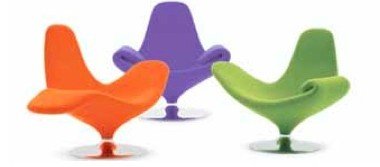Design V. Styling: The role of the traditional Italian design studio in contemporary business culture
The design activities of Italian and American design studios are based on totally different business models. In the American system we find large professional studios, multinational organizations that reach a company size measured in hundreds of employees, while Italian design factories work with designers who usually operate from small professional studios with which the company has a consolidated relationship. Many designers of the older generation – Castiglioni, Magistretti, Sapper, Mari and Zanuso – worked with facilities reduced to the limits!
The work that is developed in the American-type studio is basically different from that of the design studio working for Italian design-oriented companies.
In the first case, design is often conceived as an engineering idea generated inside the company itself, often already patented. Design has to provide an external housing for a mechanism or an electronic system that is supplied complete. In this case, design adds a relative value to the product, with respect to the product’s market value.
The approach to design in studios based on the Italian system is totally different. In this case, the company asks the designer to invent a new concept, a new type of product that would enable them to achieve a market price perhaps even four or five times higher than the standard price for that sort of product. If I have to design a plastic breadbin for Alessi, I know that, regardless of the way I design it, it will cost about 50 Euros, while in a department store, a breadbin can be found at about 10-15 Euro. The designer has to think of an idea or a strategy that enables the product to be sold at that price, within the appropriate system of distribution.
Here we have to be careful. A design-oriented company does not sell its products at high prices to achieve a greater profit margin. On the contrary, very careful consideration is given to the price. It is the very mechanism of manufacturing and distribution, based on limited quantities, the necessity for quality materials and finish, and manufacturing flexibility (the quantity/colours relationship) that determines this approach and the market. In the best of cases, the hundreds of thousands of units that may be manufactured and sold every year are still low with respect to the millions of units manufactured for large-scale distribution.
Italian companies have traditionally acknowledged the importance of the designer’s work, considering the designer as the “author” and recognising him a certain percentage of the product turnover. This generally does not occur in the case of American studios. Of course, this attitude of working on all aspects of a design, continuously reinventing object types and strategy, is linked to the excellence and nobility of a creative process that is so deeply rooted in Italian culture and tradition.
Often the production, and economic health, of an important Italian design factory is linked to one or few designers who did much to guarantee the company’s success. The designer feels a continuous desire to work as best as possible, in direct contact with the manufacturer, participating in the success – or failure – of a product. The reason for this is linked to Italian design culture, and this is why Italian companies usually work with Italian designers as their primary point of reference, even though there are more and more examples of cooperation with designers from abroad.
Large multinational companies working in the most technologically advanced sectors of the market, as consumer electronics, audio-video equipment, telephones or cars, have always worked with large studios based on the American model.
Today, companies are beginning to understand the cultural limits of this approach related to styling instead of design and they are increasingly turning to design studios reflecting the Italian model of design. They find themselves having to differentiate product categories according to both consumer target and price target. The future generations of cell phones, and equally cameras and watches, will reflect four different product lines: business, smart and managerial; family, with a lower, more basic entry level; fashion, with more sophisticated image; and new technology, in which new software is tested, with high target price. This is something difficult to achieve with internal designers, and so there is an increasing demand for design on the part of large international companies working in the various sectors, whether telephones, household electrical appliances, audio and video products, and the automobile industry.
This category specialisation requires the designer’s intervention, in the role of image specialist. He or she has to be able to give the object a powerful identity that corresponds to the above-mentioned categories. Design becomes a factor that can create added value based on identity, quality and difference.
International companies have understood that the added value provided by design can be converted into capital in terms of the market. Markets are saturated today, and so companies consider design as a potential weapon enabling the conquest of new, more exclusive and better evolved, consumer niches. In this way they avoid a crippling downwards price spiral. They use design as a factor of competition, and invest in the personality, great emotional and sensorial appeal, positioned at a high price sector. This enables them to restructure manufacturing by extending the range in a vertical direction.
About the Author
Stefano Giovannoni was born in La Spezia, graduated in Architecture in Florence, lives and works in Milan. He is collaborating as interior, industrial designer and architect with companies like Alessi, Amore Pacific, Bisazza, Cedderoth, Deborah, Edra, Fiat, Flos, Hannstar, Hansemm, Helit, Henkel, Honeywell, KDDI, Kokuyo, Inda, Laufen, Lavazza, LG Hausys, Magis, Mikakuto, Ntt Docomo, Oras, Oregon Scientific, Puig, Pulsar, Samsung, Seiko, Siemens, Slide, 3M, Telecom, Toto, Veneta Cucine, etc. He designed very successful commercial products such as, for Alessi, the “Girotondo” and “Mami” series, the Alessi plastic products, “Il Bagno Alessi” and the “Bombo” series for Magis.




